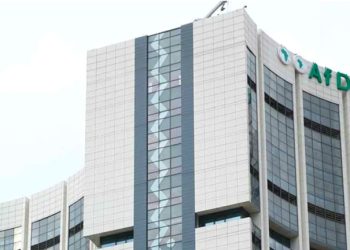
The past two years have put into sharp focus the need to build economies that are resilient to shocks such as those brought about by global pandemics.
Part of building resilient economies is ensuring that they are well diversified not only in terms sources of growth, but also employment, trade and government revenues. In its current form, the Namibian economy remains largely undiversified based on three hallmark features.
The first is that the performance of the overall economy has become increasingly reliant on mining commodity exports which tend to be volatile as they are dependent on commodity prices set at an international level.
The second is that the economy has for a long time relied on the expansion of the government budget to inject resources into the economy during slowdowns. This has resulted in elevated levels of government debt which are not sustainable over the long term.
The third feature pertains to the economy being tilted towards private consumption, which in Namibia has a high import element, rather than being tilted towards investment and exports which are more growth positive.
For Namibia, diversifying the economy would mean moving away from relying on only one or two main drivers of growth. This would require expanding investments in the non-mining, non-government sector and orienting these investments to be weighted towards exports rather than consumption.
Although not a panacea, oil discoveries and green hydrogen projects are certainly a step in the right direction towards diversifying the economy if proven to be commercially viable.
From a structural perspective, the government has limited capacity to inject stimulus into the economy and the private sector faces a significant skills shortage to the degree that diversification can be realised.
Therefore, a key consideration in the pursuit of a diversified economy is attracting foreign direct investment through an appropriate policy framework. Foreign direct investment is defined by Global bodies such as World Bank, OECD and our Foreign Investment Act No. 27 of 1990 as foreign enterprises that acquire a 10% or more equity stake-holding in a local enterprise, providing it voting power.
Furthermore, the enterprise must be involved in the management of the enterprise. This means that foreign direct investment occurs when multinational corporations (MNCs) set up presence in foreign countries.Â
There are various reasons why multinationals would want to expand their operations across various countries.
One reason is that companies like Uber have unique platforms and intellectual property that allow them to be competitive and gain market-share in other countries.
 Another reason may be related to locational advantages such as abundancy of natural resources or incentives that make a certain country an attractive investment destination, such as in the case of mining and manufacturing industries.
 A third reason is that MNCs sometimes need to make a decision whether to outsource or internalize their operations. We see large telcos such as Vodafone setup call centers in various countries to capitalize on their labour conditions.
From a demand perspective, it is important to understand why countries strive to attract MNCs. More often than not, micro benefits are somewhat less appreciated than the macro benefits. MNCs introduce knowledge, innovations and technology that can be transferred through various channels to local firms, including SMEs, helping them boost their productivity.
This results in a multiplier effect characterized by the introduction of new industries, domestic growth and a cycle of attracting even more investments. This is the epitome of economic diversification which benefits both local and foreign firms.
It is important to note that the aforementioned process is not automatic and is influenced by a country’s legislative and policy environment that affects how MNCs interact with the host economy. In this regard, there are two types of policies.
The first are those focused on enhancing a country’s locational advantages by providing flexible trade and foreign exchange regimes, tax incentives and the like.
 The second type are focused on catalyzing the development multiplier effect described earlier from MNCs, motivating them to develop local talent, creating upstream and downstream linkages, spurring innovation and positive competition to benefit local players.
The criticism around the first type of policies is that they are necessary but not sufficient and do not attract sustainable investments that could spur diversification. Given this, countries need to ensure that policy incentives are not only geared towards creating locational advantages but should be geared towards incentivizing the multiplier effect to make FDI work for development.
 This gives us the opportunity to overcome the buzz of policy uncertainty and consider policies as a tool for rippling the effect of economic development. Once we are able to reach a common ground about the end goal of what such policies need to look like to affect investment outcomes for development and diversification and how they can enable that, a lot of the uncertainties are bound to be watered down.
*By Ruusa Nandago, FirstRand Namibia Group Economist and Reem El Sherif, RMB Namibia Strategy and Business Development Manager
Â











